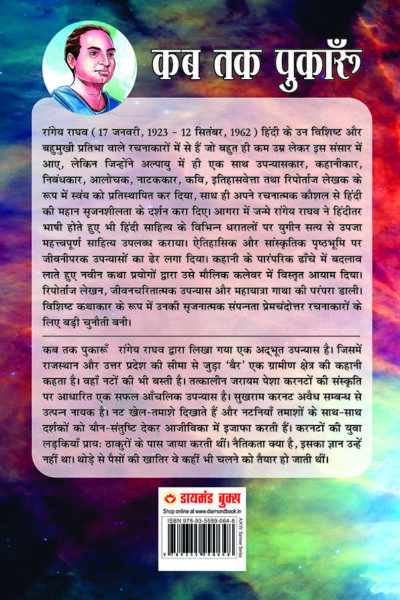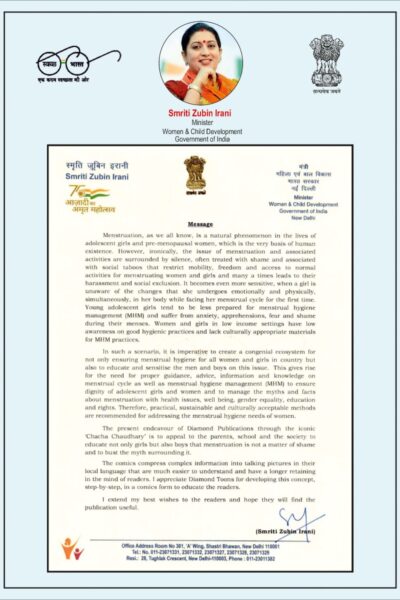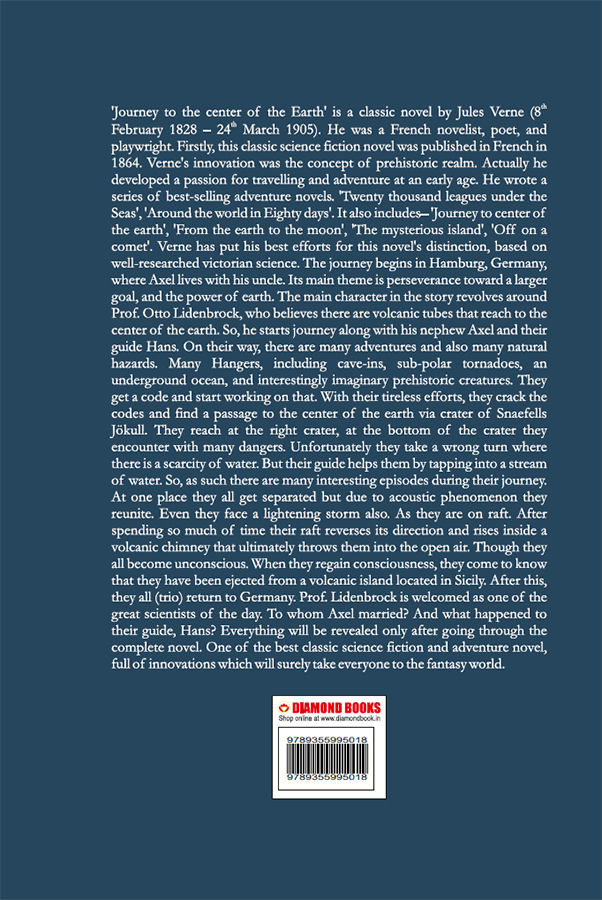- Home
-
-
- Short Stories
- Traveloc
- Novel
- Indian Classics
- Business Strategy
Shop Our top-rated business strategy books are designed for entrepreneurs and business leaders, offering proven strategies to elevate business success. Learn from industry experts and discover actionable insights to drive growth and profitability. Buy now and master the skills that set top businesses apart.
- Corporate History
Discover a comprehensive collection of corporate history books that detail the rise and success of major companies and their visionary leaders. Explore how these influential figures and their groundbreaking strategies have shaped industries and transformed the global business landscape.
- Economics
Discover the best economic and market books in India at Diamond Book Store. Our collection features essential reads on domestic and global market theories, offering in-depth analyses and key insights into economic trends. Enhance your understanding of financial markets, investment strategies, and economic principles with our expertly curated selection. Visit us to grow your knowledge and stay ahead in the world of finance.
- Romance / Fantasy
Discover captivating romance and fantasy books at Diamond Books. From enchanting love stories to magical adventures, these books offer readers a perfect blend of passion and imagination. Ideal for those who love romantic and fantastical narratives.
- Finance
Buy top finance and money management books at Diamond Book Store. Enhance your money-saving skills with expert strategies and key insights. Explore our curated selection to discover effective saving techniques and financial wisdom. Shop now to gain valuable knowledge, make informed decisions, and secure a prosperous financial future.
- Network Marketing
Network Marketing is a business model that leverages personal networks to promote products and services. It empowers individuals to build their own sales team, earning commissions not only from their own sales but also from the sales made by their team members. This model encourages entrepreneurship, collaboration, and exponential growth
- See More
- Short Stories
-
Books, Bookazine, Fiction, Magazines
₹30.00Original price was: ₹30.00.₹29.00Current price is: ₹29.00. Add to cart
-
-
Diamond Books, Books, Fiction, Indian Classics
₹450.00Original price was: ₹450.00.₹449.00Current price is: ₹449.00. Add to cart
-
-
Diamond Books, Fiction, Language & Literature, Short Stories
₹175.00Original price was: ₹175.00.₹174.00Current price is: ₹174.00. Add to cart
-
-
₹1,300.00 – ₹19,000.00 Select options This product has multiple variants. The options may be chosen on the product page
-
-
-
-
- Autobiography
Explore our extensive collection of autobiographies and Memories, showcasing the personal stories, challenges, and triumphs of influential figures from all walks of life. These powerful narratives provide an intimate glimpse into the lives and legacies of remarkable individuals. Discover their inspiring journeys and find your next great read—visit us now!
- Religious
Our collection of religious books is designed to deepen faith, enhance wisdom, and elevate spirituality. It includes timeless classics and contemporary works, offering insightful guidance and teachings to develop a closer relationship with God and understanding of spiritual journey. Shop now for transformative faith and knowledge.
- Internet
Computing and the internet are rapidly evolving fields that shape our daily lives and future innovations. This guide offers a comprehensive look at the latest trends, technologies, and best practices in the digital realm. Whether you’re interested in cutting-edge computing advancements or the latest developments on the internet, this resource provides valuable insights to help you stay informed and make the most of the digital world
- Family Health
Explore Diamond Books’ family health collection. Featuring comprehensive guides on wellness and practical nutrition tips, these books provide essential advice for keeping your family healthy and thriving.
- History & Politics
Discover the wonders of India, a land of rich history, vibrant culture, and stunning landscapes. Explore famous landmarks, delve into the diverse traditions, and experience the beauty of India’s heritage. Whether you’re seeking historical insights or planning a trip, India offers endless possibilities for discovery and adventure
- Hinduism
Dive into Hinduism with comprehensive resources that cover key beliefs, rituals, and cultural practices. Explore the spiritual and philosophical dimensions of Hinduism, including its rich traditions and sacred texts, to gain a deeper understanding of this ancient religion. Ideal for those seeking to learn about the diverse aspects of Hindu culture and spirituality.
- Scientist & Inventors
Explore the diamond book store for the best Scientist & Inventors Books Collection” includes biographies, autobiographies, and detailed accounts of the lives and works of iconic figures like Albert Einstein, Nikola Tesla, Marie Curie, Thomas Edison, and many more. Each book delves deep into the minds of these geniuses, offering insights into their thought processes, challenges, and the impact of their discoveries on the modern world.
- Occult and Vastu
Unlock the secrets of the occult and Vastu Shastra with our curated books. Explore spiritual wisdom, mystical arts, and harmonious living guides.
- Ayurveda
Discover the essence of Ayurveda with our collection of books at Diamond Books. Featuring ancient practices and modern applications, these books offer comprehensive guidance on achieving balance and wellness through Ayurvedic principles.
- See More
- Autobiography
-
Fiction Books, Autobiography & Memories, Biography
₹250.00Original price was: ₹250.00.₹249.00Current price is: ₹249.00. Add to cart
-
-
- Blog
- Publish With Us
Journey to the Centre of the Earth
₹250.00
- About the Book
- Book Details
Journey to the center of the Earth is a classic novel by Jules Verne (8th February 1828 – 24th March 1905). he was a French novelist, poet, and playwright. Firstly, this classic Science fiction novel was published in French in 1864. Vernes innovation was the concept of the prehistoric realm. Actually he developed a passion for travelling and adventure at an early age. He wrote a series of best-selling adventure novels. Twenty thousand leagues under the seas, around the world in eighty days. it also includes journey to center of the Earth, from the Earth to the moon, the mysterious island, off on a comet. Verne has put his best efforts for this novella distinction, based on well-researched Victorian Science. The journey begins in Hamburg, Germany, where Axel lives with his uncle. Its main Theme is perseverance toward a larger goal, and the power of Earth. The main character in the story revolves around Prof. Otto Lidenbrock, who believes there are volcanic tubes that reach to the center of the Earth. So, he starts the journey along with his nephew Axel and their guide Hans. On their way, there are many adventures and also many natural hazards. Many hangers, including cave-ins, sub-polar Tornadoes, an underground ocean, and interestingly imaginary prehistoric creatures. They get a code and start working on that. With their tireless efforts, they crack the codes and find a passage to the center of the Earth via the crater of snaefells jökull. They reach the right crater, at the bottom of the crater they encounter many dangers. Unfortunately they take a wrong turn where there is a scarcity of water. But their guide helps them by tapping into a stream of water. So, as such there are many interesting episodes during their journey. At one place they all get separated but due to acoustic phenomenon they reunite. Even they face a Lightning storm. As they are on a raft. After spending so much time their raft reverses its direction and rises inside a volcanic Chimney that ultimately throws them into the open air. Though they all become unconscious. When they regain consciousness, they come to know that they have been ejected from a volcanic island located in Sicily. After this, they all (trio) return to Germany. Prof. Lidenbrock is welcomed as one of the great scientists of the day. To whom Axel married? And what happened to their guide, Hans? Everything will be revealed only after going through the complete novel. One of the best classic Science fiction and adventure novel, full of innovations which will surely take everyone to the fantasy world.
About the Author
Vernes works can be divided into three distinct phases. The first, from 1862 to 1886, might be termed his positivist period. Verne churned out many successful science-adventure novels, including Voyage au centre de la terre (1863, expanded 1867; Journey to the Centre of the Earth), De la terre à la lune (1865; From the Earth to the Moon), Autour de la lune (1870; Around the Moon), Vingt mille lieues sous les mers (1870; Twenty Thousand Leagues Under the Sea), and Le Tour du monde en quatre-vingts jours (1873; Around the World in Eighty Days).
The second phase, from 1886 until his death in 1905, might be considered Vernes pessimist period. Throughout these years the ideological tone of his Voyages extraordinaires began to change. Increasingly, Verne turned away from pro-science tales of exploration and discovery in favour of exploring the dangers of technology wrought by hubris-filled scientists in novels such as Sans dessus dessous (1889; Topsy-Turvy or The Purchase of the North Pole), LÎle à hélice (1895; The Floating Island or The Self-Propelled Island or Propeller Island), Face au drapeau (1896; Facing the Flag or For the Flag), and Maître du monde (1904; Master of the World).
The third and final phase of the Jules Verne story, from 1905 to 1919, might be considered the Verne fils period, when his posthumous works were published after being substantially revampedby his son, Michel. They included Le Volcan dor (1906; The Golden Volcano), LAgence Thompson and Co. (1907; The Thompson Travel Agency), La Chasse au météore (1908; The Chase of the Golden Meteor), Le Pilote du Danube (1908; The Danube Pilot), Les Naufragés du Jonathan (1909; The Survivors of the Jonathan), Le Secret de Wilhelm Storitz (1910; The Secret of Wilhelm Storitz), Hier et demain (1910; Yesterday and Tomorrow, a collection of short stories), and LÉtonnante aventure de la mission Barsac (1919; The Barsac Mission).
During the 20th century Vernes works were translated into more than 140 languages, making him one of the worlds most translated authors. A number of successful motion pictures were made from Verne novels, starting in 1916 with 20, 000 Leagues Under the Sea (remade in 1954 by Walt Disney) and including The Mysterious Island (1929 and 1961), From the Earth to the Moon (1958), Journey to the Center of the Earth (1959), and, perhaps the most popular, Around the World in 80 Days (1956).
Additional information
| Author | Jules Verne |
|---|---|
| ISBN | 9789355995018 |
| Pages | 48 |
| Format | Paperback |
| Language | English |
| Publisher | Diamond Books |
| Amazon | |
| Flipkart | https://www.flipkart.com/journey-centre-earth/p/itmew98vzmka8c5z?pid=9789355995018 |
| ISBN 10 | 9355995016 |
Journey to the center of the Earth is a classic novel by Jules Vert.
ISBN10-9355995016
Related products
-
Diamond Books, Diet & nutrition
₹75.00Original price was: ₹75.00.₹64.00Current price is: ₹64.00. Add to cart







































